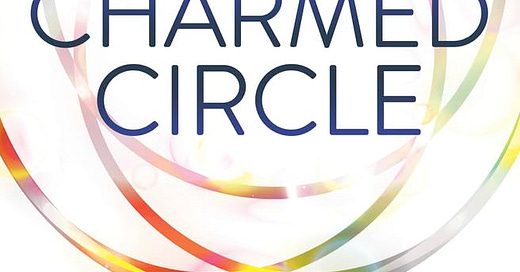Review: "Outside the Charmed Circle" by Misha Magdalene
It's Pride Month and this is a queer witchcraft/pagan non-fiction book I can highly recommend.
“Outside the Charmed Circle: Exploring Gender & Sexuality in Magical Practice” by Misha Magdalene
The author of this book is a nonbinary queer witch, a pagan and has studied sciences of gender and sexuality. Sometimes they elaborate explaining why they have written something and at times, this book has a quite academic, theoretical feeling. But on the other hand, in some places in this book, thorough explanations and definitions are simply necessary.
After a foreword (by Michelle Belanger) and an introduction, in the second chapter it‘s all about terms and their definitions. This is especially good for straight/cis allies who are not familiar with the many queer labels out there.
In the next chapter, embodiment as magical praxis is mostly focussing on the body, but not only. Moving on, gender in theory and praxis and what this has to do with magic, followed up by a chapter about »Queerness and the charmed circle«.
In chapter 6, it gets physical (and metaphysical), this is about sex magic and yes, there is a practical exercise/ritual. The whole book has several exercises, some of them thought-provoking for writing, others are focussing on spells, working with your body (for instance a mindfulness exercise) and rituals.
Chapter 7 focusses on »A consent based Magical Praxis«, which I find to be a very important subject in any community and in any relationship. This is followed by another very good chapter about »Negotiating Consent With Gods« where the author explains that yes, you can say No to a deity if their requests are unwelcome. But that is by far not all which can be said on that matter, which this chapter shows. I have never read anything like these chapters about consent in an esoteric book, just bits and pieces in some blogs and I am very glad it got included so thoroughly here.
Chapter 9 ist about »Queering your Praxis: Developing and Adapting Magical Practices«. I thought the author might give some practical examples here, but instead they stayed more theoretical here, elaborating about three different approaches to a spiritual/magical/witchcraft path and how you could adapt queerness in them.
I very much like the next chapter about »Thoughts on Politics, Power and Community«. If you consider yourself and your spiritual path apolitical, the author here reminds us that any interaction in communities and between people is actually political on some level. They write about how power (and power differences) influence p-word communities (p-word stands for pagan, polytheism, pantheism) and also leaders in these communities. They continue to write about diversity, inclusion and its opposite, for instance the exclusion of white supremacists and other hate groups in many heathen communities, also mentioning the paradox of tolerance about which the philosopher Karl Popper wrote.
There are some more thoughts on »What Lies Beyond the Circle« in the last chapter, followed by two extensive appendixes for further reading which are worth a closer look.
My conclusion: I can highly recommend this thorough book very much to any queer person on a spiritual/pagan/witchcraft/magic path, as well as straight/cis allies.



